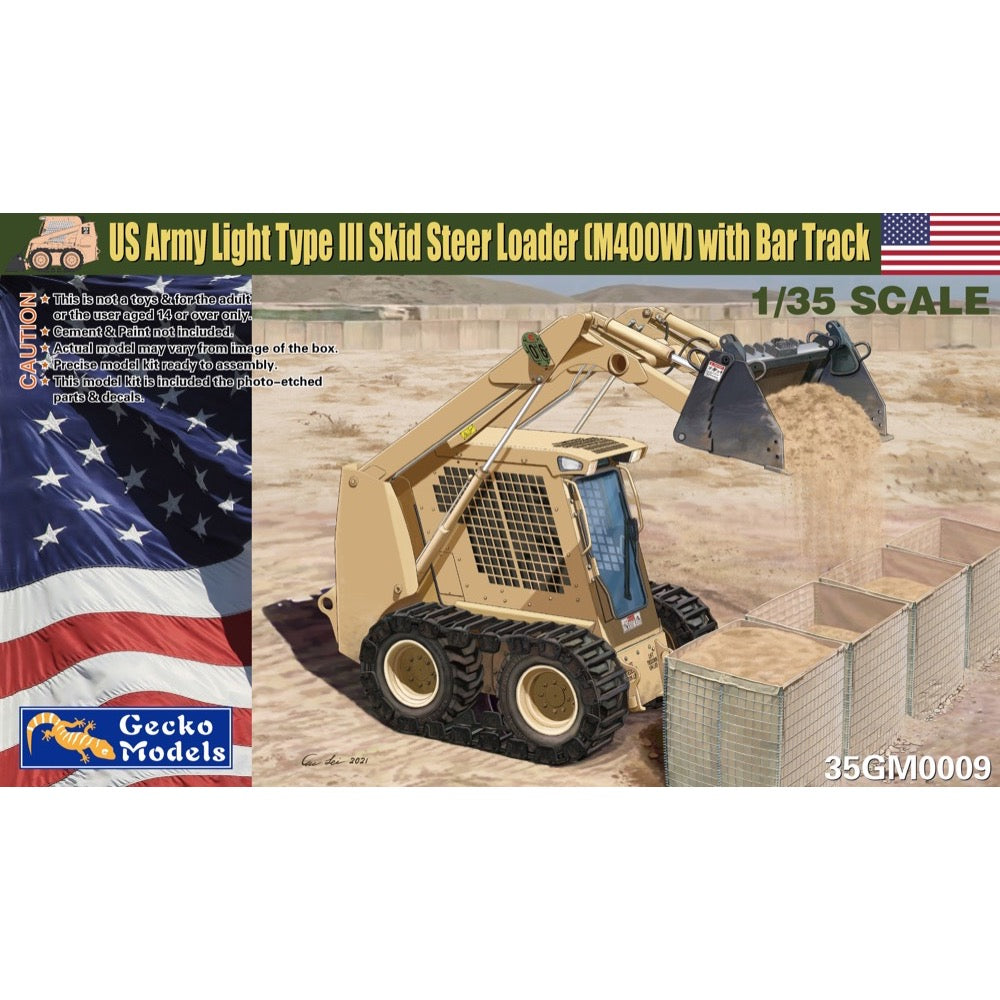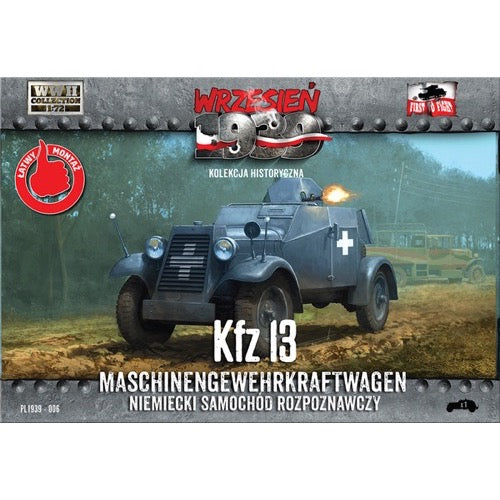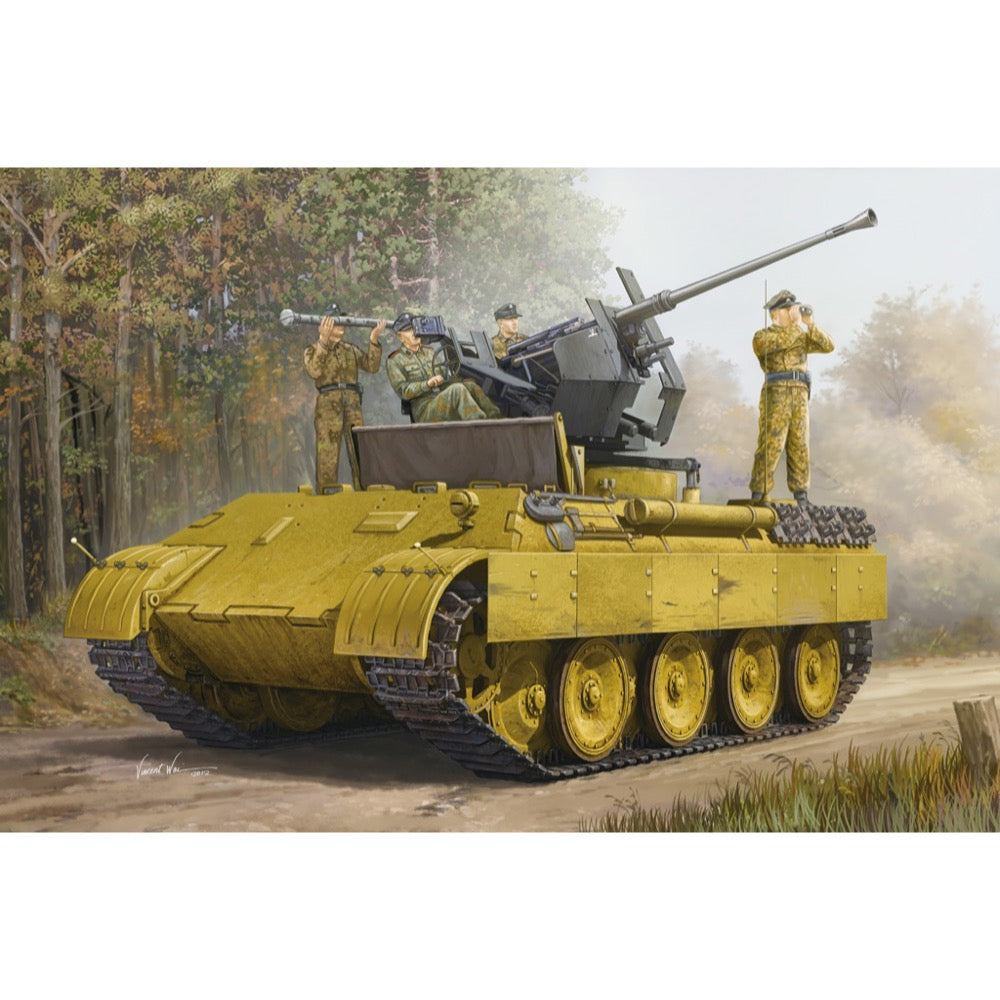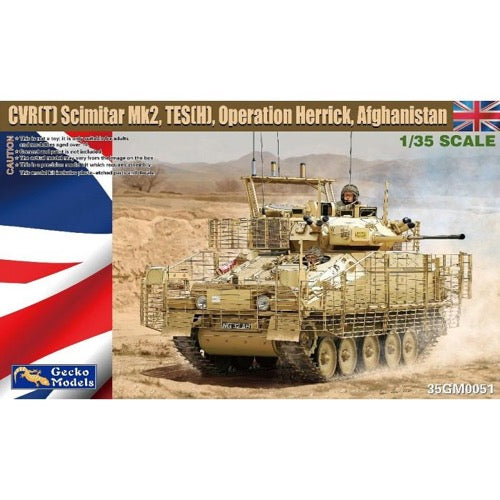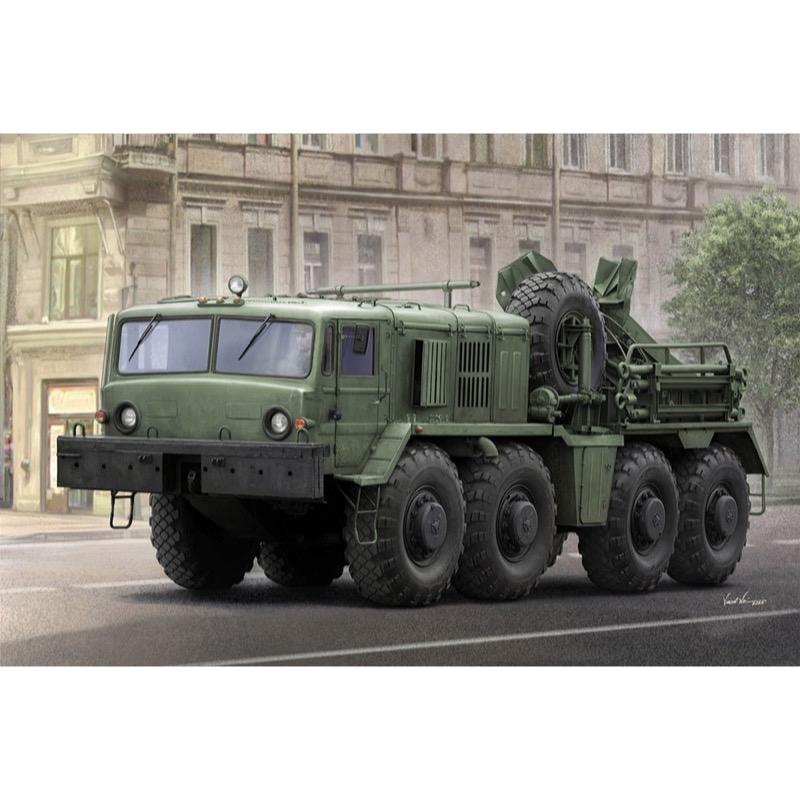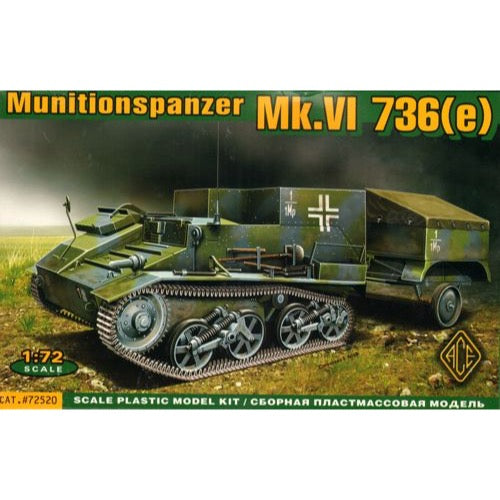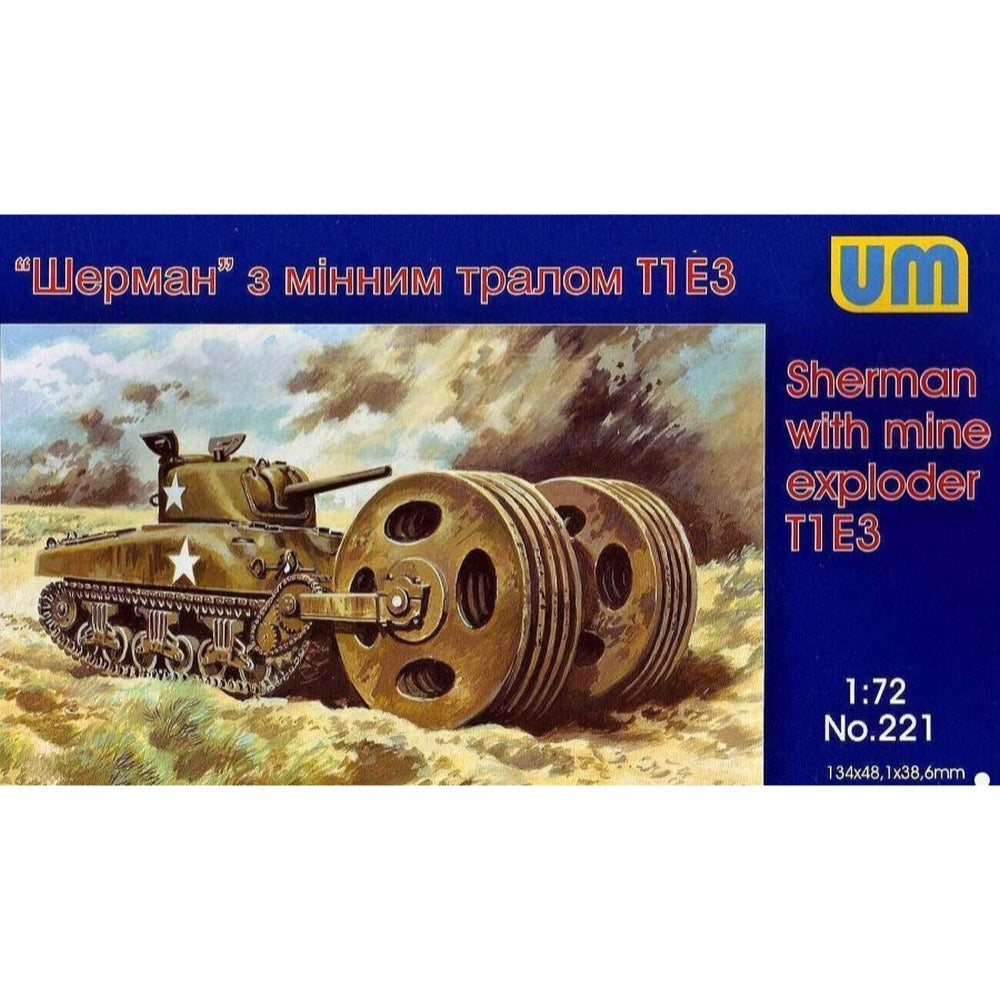
UniModel 221 1/72 Sherman with Mine Exploder T1E3
14.00
$
<h3>Sherman with Mine Exploder T1E3 in 1/72 Scale.</h3><p>The M4 Sherman, officially Medium Tank, M4, was the most widely used medium tank by the United States and Western Allies in World War II. The M4 Sherman proved to be reliable, relatively cheap to produce, and available in great numbers. It was also the basis of several other armored fighting vehicles including self-propelled artillery, tank destroyers, and recovery vehicles. Tens of thousands were distributed through the Lend-Lease program to the British Commonwealth and Soviet Union. The tank was named by the British for the American Civil War general William Tecumseh Sherman.</p><h3>Specifications</h3><ul><li>Model length: 134 mm / 5.27 inch</li></ul>

Revell 03320 1/35 Leopard 1A5
25.00
$
<p>Model kit of the German Leopard 1A5. Between 1986 and 1992, the Leopard 1 received a combat upgrade that included an improved fire control system. Vehicles upgraded accordingly were designated the Leopard 1A5.</p>
<h3>Features</h3>
<ul>
<li>Easy to assemble vinyl track</li>
<li>Detailed surfaces</li>
</ul>
<h3>Authentic representation of the following versions</h3>
<ul>
<li>Leopard 1A5, 2.PzBtl 14, Hildesheim</li>
<li>Leopard 1A5, 3.PzBtl 74, Cuxhaven/Altenwalde</li>
<li>Leopard 1A5, 4.PzBtl 413, Torgelow</li>
<li>Leopard 1A5, 4th PzBtl 383, Bad Frankenhausen</li>
</ul>
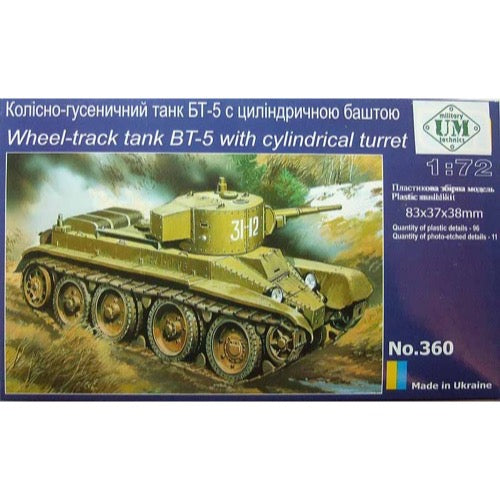
Unimodel 360 1/72 BT-5 with Cyllindric Turret
7.00
$
<p>The BT tanks "fast moving tank" or "high-speed tank" were a series of Soviet cavalry tanksproduced in large numbers between 1932 and 1941. They were lightly armoured, but reasonably well-armed for their time, and had the best mobility of all contemporary tanks of the world. The BT tanks were known by the nickname Betka from the acronym, or its diminutive Betushka.</p>
<h3>Features</h3>
<ul>
<li>Detailed exterior, chassis, photo-etched parts, and link-&-length tracks</li>
<li>Includes markings for 3 tanks</li>
</ul>

Meng TS-015 1/35 German Main Battle Tank Leopard 1 A5
24.00
$
<h3>Leopard 1 A5 MBT was upgraded from Leopard 1 A1A1 by West Germany to rival the latest Soviet tanks in 1980s.</h3>
<p>It’s the last mass-produced upgraded version of the Leopard 1 family. Leopard 1 A5 MBT is installed with a modern fire-control system, so it can use seven kinds of rounds, and its maximum firing range is up to 4000 meters. The upgrade also includes the addition of turret add-on armor, introduction of APFSDS rounds and modification of the hydraulic system of running gear and NBC protection system. In 1987, Leopard 1 A5 entered service in German Army. It’s exported to Canada, Greece and Italy</p>
<h3>Features</h3>
<ul>
<li>
<p>This 1/35 scale TS-015 German Main Battle Tank Leopard 1 A5 plastic model kit precisely presents the features of German tanks.</p>
</li>
<li>
<p>TPE turret add-on armor is as realistic as replicated the real thing and all its mounting bosses are accurately reproduced</p>
</li>
<li>
<p>Clear periscopes and lights are provided; hatches, including the ammunition loading port, can be built open or closed</p>
</li>
<li>
<p>Holes on the side-skirts are realistically represented</p>
</li>
<li>
<p>Cement-free workable double-pin tracks are easy to assemble</p>
</li>
<li>
<p>The workable tracks and movable suspension make the model more interesting</p>
</li>
<li>
<p>Two precision PE frets of different thicknesses are provided for different details</p>
</li>
<li>
<p>Three paint schemes are included</p>
</li>
</ul>
<h3>Specifications</h3>
<ul>
<li>
<p>Length: 270mm</p>
</li>
<li>
<p>Width: 97mm</p>
</li>
</ul>

MiniArt 35237 1/35 T-60 Screened Plant No. 264 Stalingrad with Interior
22.00
$
<h3>Features</h3>
<ul>
<li>Highly Detailed Model</li>
<li>Individual Tracks Included</li>
<li>Photo-Etched Parts Included</li>
<li>All Hatches Can Be Posed Open Or Close</li>
<li>Decal Sheet For 4 Variants</li>
</ul>

Roden 717 1/72 Vauxhall D-Type Staff Ambulance
8.00
$
<h3>Vauxhall D-Type Red Cross Ambulance 1/72 Roden</h3>
<p>The first few months of fighting in 1914 gave rise to the picture we have now, that the war, only recently begun, would not just be long and exhausting - it would be a war of indefinite term and enormous losses, entailing in particular the loss of a large number of human lives. The assessment of losses at the end of 1914 was estimated in the tens of thousands, and the number of injured as a result of violent clashes on the battlefield was beyond all computation.</p>
<p>The British Army had been trying to bring its medical services to a much higher level to assist injured soldiers ever since the Crimean War of 1853-1856, but more than half a century later, not much had radically changed in this matter. The wounded were taken from the battlefield in wooden horse carts, which were in no way equipped to ease suffering. Losses during transportation of the wounded from the battlefield to hospitals were simply awful. The Director General Army Medical Services Sir Alfred Keogh called on the Secretary of State for War to give the army special ambulances, but this proposal was rejected because of its associated great cost. In October 1914 the leading, highly respected British newspaper The Times appealed to its readers to make financial contributions for the procurement of ambulances. It was a very effective appeal, and already by early 1915 the army had received 512 vehicles, which had typically been converted from conventional automobiles to primitive (by modern standards) ambulances. However, at that time this military aid was so significant and important that these simple medical vans became virtual 'guardian angels' for many who otherwise would have surely died from their injuries, never reaching a military hospital.</p>
<p>The ambulances of the time did not have a common standard and there were a wide variety of types. One of these vehicles, which had also been redesigned to suit medical needs, was the Vauxhall D-Type. The Vauxhall Motors Company was founded by Alexander Wilson in 1857 and it specialized in developing equipment for ships, but with the advent of the motor car the company became interested in this promising new industry and in 1903 produced its first example of a four-wheel car. By 1910 its main priority was the marketing of sports cars, but the beginning of the First World War radically changed the production profile of many companies, including Vauxhall. From 1912 to 1922 more than 1,500 cars of the Vauxhall D-type were produced. They were widely used as staff cars, but a certain number were refashioned for medical purposes and used on the Western Front side-by-side with many other ambulances which had to conduct perhaps the most important mission in the war - to save the army's most important assets, human lives.</p>


